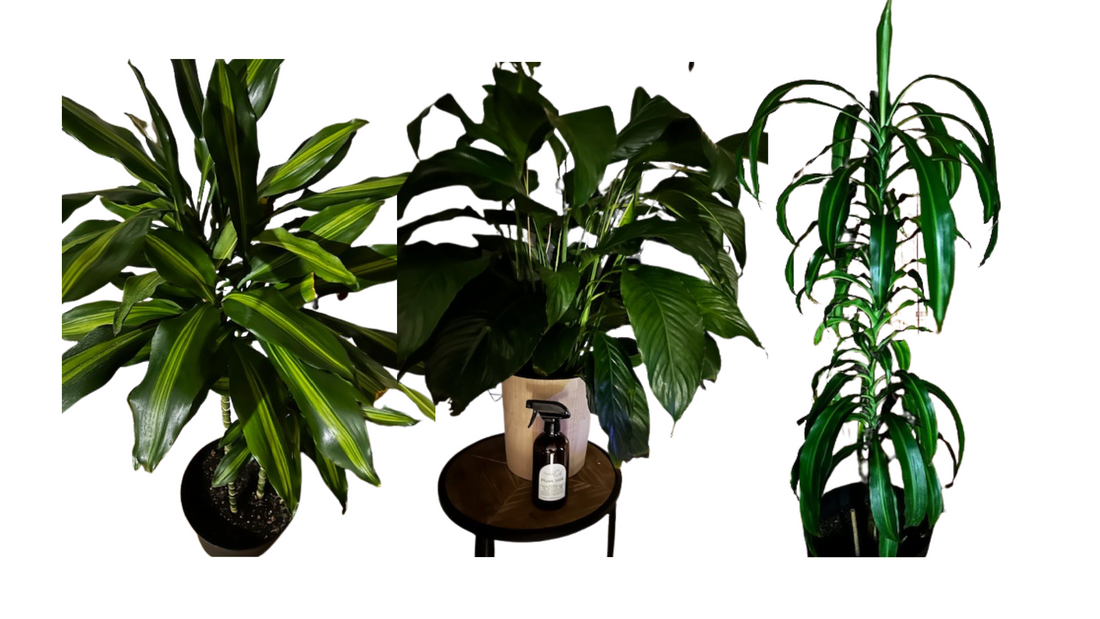Keeping houseplants alive seems nearly impossible sometimes. You are probably wondering..."What am I doing wrong? I just can't keep my plants alive at all ! Even cacti. " Don't have a green thumb ? Well I didn't either until I learned to master these 4 steps. Now I'm a Plant Mama with 16 thriving plant babies. If I can do it , so can you ! Fear not , we have put together our top tips for beginners to help keep your plants alive and well !
1. Identify The Type Of Plant You Have
When purchasing a new plant , usually there is some sort of label with the name. If there happens to be no label or maybe you received a plant as a gift and it has no identification there are a few ways you can identify it. A simple trick is to take a picture with the Google Lens app and it will tell you what kind of plant it is so you can know how to take care of it. Also , you may try typing in a description of the plant ... the way the leaves look , the color , how big or small it is and any other noticeable distinctions about it. It is important to identify your plant first , as some plants may have toxic leaves that may not be touched or unsafe for pets.
2. NAME YOUR PLANT
Once you have identified your plant , NAME IT . Make sure your plant has an identity. How would you like it if nobody called you by name, you would just be that human with the legs or "Hey person , how are you" "Person I need you to do this task". Pick a name that resonates with YOU. Doing so will allow energy association which promotes growth and flourishing. Take some time to get a feel on what the plant feels like to you.... does it make you feel more energized , powerful , happy, abundant? Maybe all of the above applies but getting a general idea is a great start !
Now that you have identified and named your plant , you are fine to care for it as a living entity ( which it is )
3. Space
All plants grow ! The size of your plant growth will depend on 2 things , the type of plant it is and how much space it has. This is something to consider when purchasing new plants or deciding where to put existing plants. Think of the clothes you wore as a child and the clothes you wear now. You more than likely can't fit into your baby clothes anymore ... you needed more space in your clothes as your body grew. As your plant grows , change its clothes ( space ).
When deciding where to put it , make sure it in not in direct sunlight but make sure it does get some sun. When starting with a smaller plant , there is more leeway, as it has not reached its full potential yet. However, as your plant grows you will have to determine the best space for it.
4. Watering
Over-watering your plant will kill it just as much as not watering it at all will. Watering depends on the plant size and the type. A good rule of thumb when starting is to water only once a week. In warmer climates, your plant may need more water as it gets thirsty. Use water for the soil but REMEMBER THE LEAVES !
Plant Milk is the best choice for ALL plants , no matter the type. Well.... what is Plant Milk ? This delicious milk for your herbage is made with all natural ingredients and full of Plant Mama Love ( necessary for thriving plants ). It restores luster and shine to plant leaves. Promotes growth in the roots and helps add oxygen to the soil.
Plant Milk is rich in antioxidants, magnesium ( which assists with photosynthesis ) and sulphur ( which helps plants develop strong roots ). It also works marvelously to repel pests.
Just spray directly on leaves and wipe clean with a towel. You only need to wipe ONCE. After the initial Plant Milk bath , you can spray on leaves and in soil a couple of times a week.
Remember your plant is a vital part of the ecosystem. Among all multicelluar organisms, only plants have the ability to convert sunlight into organic substances via photosynthesis. They give us oxygen and we give them carbon dioxide. It's a loving partnership that should not be taken lightly.
Use code "PLANT MILK" for $2 off your purchase of Plant Milk

